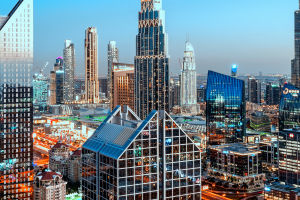Caramel is a sticky liquid or powder boiled with caramel and sucrose, dark brown and bitter, mainly used for coloring soy sauce, candy, and vinegar, among other things.
Caramel is a kind of natural colorant which is widely used in food and is an important member of food additives.
The production technology of caramel is difficult. The reason why American Coca-Cola has been popular all over the world for a century and has such a high international market share is inseparable from its acid-resistant caramel technology.
Now we know that the reason why vinegar and soy sauce appear black is mainly due to caramel. And caramel is a natural food additive, we can rest assured to eat it.
Caramel is done as follows:
1. Put the sugar and 30 grams of water into the pot, stir well with a spoon, heat it on the fire, and do not stir when heating.
2. Observe at any time when cooking, after boiling, the surface bubbles will be many and very large, but with the decrease of moisture, the bubbles will become smaller and smaller, the edge of the water will show a light yellow, adjust the firepower to a minimum, then you can shake the pot and observe the color of the syrup.
3. When the syrup turns amber or brown and smells sweet caramel, add hot water, stir well and turn off the heat.
When boiling caramel, to avoid the crystallization of sugar, we can stir slightly with a spoon when the sugar is mixed with water, and fire and stop stirring during the cooking process. If there are sugar particles attached to the pot wall, you can use a brush to brush the pot wall from the top to the bottom, so that the sugar particles can be brought to the pot along the current.
When boiling caramel, we must pay attention to the choice of granulated sugar, granulated sugar is purer than white sugar, and the caramel will be better. In the production process, we must prevent sticking pots.
Caramel in addition to the above flow state, there is dry caramel, that is, fixed caramel.
1. Spread a thin layer of sugar evenly over a heavy frying pan or saucepan. Make sure the pot is big enough for the sugar to expand after heating.
2. Heat the sugar over medium heat. During the heating process, the sugar will first turn brown from the edge, at this time, take a heat-resistant kitchen utensil to lead the melted sugar to the middle.
It is important to note that the sugar that has melted outside must be moved to the middle, otherwise it will burn, and if it does burn, it will not be used. If you start to form large pieces of sugar, you can turn the fire down a little and stir it slowly. After a while, those big clumps will melt away.
3. Brown the sugar.
After this step, the process of boiling sugar will become faster, so be sure to stay by the side.
If you want to make fructose, now add a cup of roasted and chopped nuts to the pan, add a pinch or two of salt and stir it gently, and then pour it on the wax paper spread on the baking pan to cool and set.
4. If you are not going to add liquid to the caramel, another way to cool it (that is, to stop the boiling process) is to sit the pot directly in a large basin filled with cold water. Finally, you can get dry caramel.


